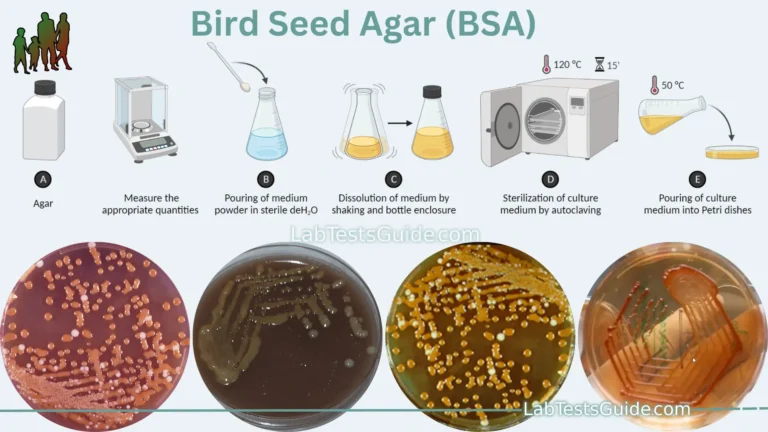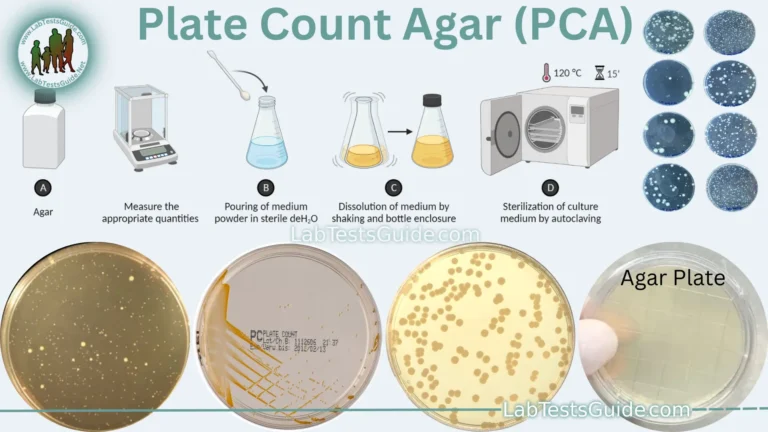In laboratory testing, a color reagent for glucose is used to facilitate the colorimetric detection of glucose levels in a sample. One commonly used reagent is the glucose oxidase reagent, which operates on a colorimetric principle.

Uses of Colour Reagent for Glucose:
- Blood Glucose Monitoring:
- Purpose: To measure glucose levels in blood samples, crucial for diabetes management.
- Reagent: Glucose oxidase-based test strips.
- Urine Glucose Testing:
- Purpose: To detect glucose in urine, often used for diabetes screening or monitoring.
- Reagent: Glucose oxidase or Benedict’s reagent.
- Clinical Research:
- Purpose: To study glucose metabolism and the effects of various treatments on glucose levels.
- Reagent: Colorimetric glucose assays with glucose oxidase.
- Quality Control in Food Industry:
- Purpose: To ensure accurate glucose content in food and beverages.
- Reagent: Glucose oxidase or other colorimetric glucose assays.
- Laboratory Diagnostic Kits:
- Purpose: For diagnostic purposes in clinical laboratories to assess glucose concentration in various samples.
- Reagent: Typically includes glucose oxidase and a color-changing indicator.
Composition of Colour Reagent for Glucose:
| Component | Concentration | Volume for 230 ml |
|---|---|---|
| 4-Aminophenazone | 5 g/l | 16 ml |
| Fermcozyme 952 DM | — | 4 ml |
| Phosphate Buffer | — | 60 ml |
| Distilled water | — | 150 ml |
- Note: The concentration of 4-Aminophenazone is given as 5 g/l, and 16 ml of this solution is used. The volumes of Fermcozyme 952 DM, phosphate buffer, and distilled water are provided directly for the final 230 ml mixture.
Preparation of Colour Reagent for Glucose:
Materials Required:
- 0.5 g of 4-Aminophenazone (4-aminoantipyrine)
- 100 ml of distilled water
- Fermcozyme 952 DM (1250 U/ml of glucose oxidase, 1 mg/ml of peroxidase)
- Phosphate buffer (Reagent No. 47)
- Additional distilled water
- Dark-colored, leak-proof bottle
Steps:
- Prepare the 4-Aminophenazone Solution:
- Dissolve 0.5 g of 4-aminophenazone in 100 ml of distilled water. This will create a 5 g/l solution of 4-aminophenazone.
- Measure the Reagents:
- Measure 16 ml of the prepared 4-aminophenazone solution.
- Measure 4 ml of Fermcozyme 952 DM (ensure it’s stored at 2–8 °C before use).
- Measure 60 ml of phosphate buffer (Reagent No. 47).
- Measure 150 ml of distilled water.
- Mix the Reagents:
- Transfer the measured 4-aminophenazone solution, Fermcozyme, phosphate buffer, and distilled water into a dark-colored, leak-proof bottle.
- Mix the contents thoroughly to ensure a uniform solution.
- Label and Store:
- Label the bottle with the contents, preparation date, and expiration date.
- Store the prepared color reagent at 2–8 °C.
- The reagent is stable for approximately 3 months when refrigerated.
Note: Ensure that all chemicals are sourced from reliable suppliers, such as Merck Chemicals for 4-aminophenazone and Hughes and Hughes for Fermcozyme 952 DM.
Precautions:
- Proper Storage: Store at 2–8 °C to maintain stability.
- Protect from Light: Use a dark-colored bottle to prevent decomposition.
- Accurate Measurements: Ensure correct concentrations by measuring components precisely.Use Fresh Reagents: Verify all chemicals are within expiration dates.
- Personal Protective Equipment (PPE): Wear gloves, lab coat, and safety goggles.
- Labeling: Clearly label the bottle with contents, preparation, and expiration dates.
- Avoid Contamination: Use clean, sterile equipment to prevent contamination.
Uses of in Clinical Laboratories Colour Reagent for Glucose:
- Blood Glucose Testing: Used to measure blood glucose levels, crucial for diagnosing and monitoring diabetes.
- Urine Glucose Analysis: Applied in testing urine samples for glucose, helping in diabetes screening and monitoring renal function.
- Glucose Tolerance Tests (GTT): Employed in GTT to assess how well the body processes glucose over time, aiding in diabetes diagnosis.
- Serum Glucose Determination: Utilized to measure glucose concentration in serum samples, providing essential data for metabolic assessments.
- Quality Control in Laboratory Testing: Integral to calibrating and validating glucose measurement instruments to ensure accurate and reliable results.
- Research and Development: Used in research studies focused on glucose metabolism, diabetes, and related disorders.
- Point-of-Care Testing: Implemented in bedside glucose monitoring devices for quick and convenient testing in various clinical settings.
Possible References Used







